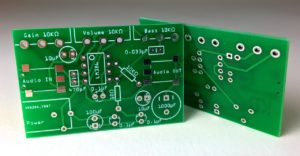Embedded hardware development involves creating the physical hardware components and systems that are integrated into various electronic devices. The process can vary depending on the complexity and requirements of the project, but generally, the following steps are involved in embedded hardware development:
- Requirements Gathering: Understand the project’s requirements and specifications. This involves gathering information about the intended use, features, performance, power consumption, size constraints, and any other specific requirements.
- System Design: Based on the gathered requirements, create a high-level system design. Define the major components, interfaces, and connections between different elements of the embedded hardware system.
- Component Selection: Select appropriate electronic components that will fulfill the system’s requirements. This includes microcontrollers/microprocessors, sensors, memory devices, power management components, communication modules, and other necessary components.
- Schematic Design: Create detailed circuit schematics that show the interconnections and relationships between the chosen components. This is a crucial step as it lays the groundwork for the actual PCB design.
- PCB Layout Design: Design the Printed Circuit Board (PCB) layout based on the schematic. Carefully consider signal integrity, power distribution, noise reduction, and component placement for optimal performance and manufacturability.
- Prototyping: Build a prototype of the hardware using the designed PCB layout. Prototyping helps to identify potential issues, verify functionality, and test the hardware in real-world scenarios.
- Testing and Validation: Rigorously test the hardware prototype to ensure it meets the desired functionality and performance requirements. This includes functional testing, stress testing, and environmental testing to verify its robustness.
- Firmware/Software Development: In parallel with the hardware development, firmware or low-level software needs to be developed to control and interact with the embedded hardware. This is typically written in programming languages suitable for the specific microcontroller/microprocessor used.
- Integration: Integrate the hardware with the developed firmware/software to create a fully functional embedded system. This involves loading the firmware onto the microcontroller and testing the system as a whole.
- Optimization: Fine-tune the hardware and software for better performance, power efficiency, and reliability. This may involve making changes to the hardware design or optimizing the firmware algorithms.
- Design for Manufacturing (DFM) and Design for Testability (DFT): Design the hardware with manufacturing and testing in mind. Ensure that the PCB design is manufacturable and consider test points for ease of testing during production.
- Quality Assurance and Validation: Implement quality control measures to ensure that each hardware unit meets the required standards and specifications. Perform rigorous testing and validation at various stages of the development process.
- Cost Optimization: While designing the hardware, keep cost considerations in mind without compromising on performance or quality. Optimize the design to reduce material costs and production expenses where possible.
- Version Control: Use version control systems to track changes in the hardware design and firmware throughout the development process. This helps maintain a history of changes and facilitates collaboration between team members.
- Certification and Compliance: If the embedded system is intended for commercial use, it might need to undergo certification and compliance testing to meet industry standards and regulations.
- Manufacturing: Once the design is finalized and tested, prepare for manufacturing. This may involve working with a PCB manufacturer and assembly house to produce the final product.
- Mass Production: Start mass production of the embedded hardware for distribution and deployment.
- Support and Maintenance: Provide ongoing support and maintenance for the hardware, including bug fixes, updates, and improvements.
Throughout the entire process, collaboration between hardware engineers, firmware/software developers, and other stakeholders is essential to ensure a successful embedded hardware development project.
The content drafted by Mr.Srinivas, Team Lead, RioSH Technologies.


